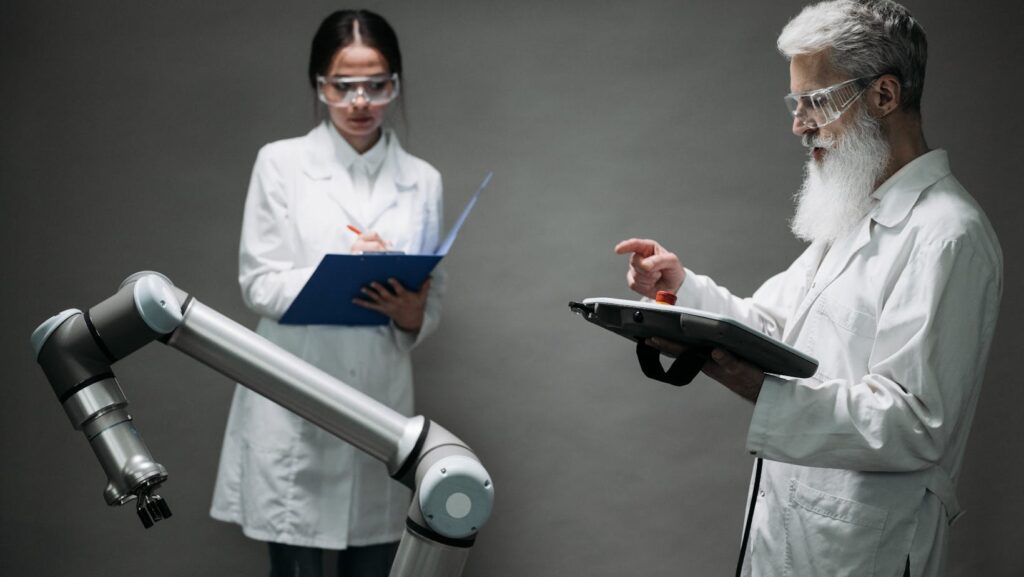In the whirlwind of the 21st century, technology and innovation have become buzzwords, often used interchangeably. But what do they really mean? And how do they shape our world? This article aims to delve into the definitions and implications of these critical concepts.
Technology, in its broadest sense, refers to the tools, systems, and methods that help to solve real-world problems. On the other hand, innovation is the process of implementing new ideas to create value. Together, they form the backbone of modern society, driving growth and progress.

Technology And Innovation Definition
Delving into the foundations of both technology and innovation elucidates the importance of these two central concepts. Comprehending these definitions enables an understanding of their role in change and progress throughout society.
Defining Technology
Technology, at its core, embodies an amalgamation of tools, machines, techniques, and methods. It’s the consequence of the application of knowledge for problem-solving and the creation of artifacts to enhance everyday life. Consider computers for instance. Initially, the size of a room, they’ve shrunk to a size that fits in pockets, courtesy of relentless advancements in technology.
Defining Innovation
On the other hand, Innovation circles the concept of introducing new ideas or methods into a system, with a view to create value. It’s a critical ingredient to foster growth and stimulate improvements in societal norms. Streaming platforms like Netflix and Spotify for example, innovated the way people access and consume media content, delivering valuable experiences to their audience.

How Technology Drives Innovation
In the current digital age, technology acts as the bedrock for breakthrough innovations. It provides the essential tools and platforms required to bring forth innovative ideas. For instance, the advent of artificial intelligence (AI) has stimulated the rise of innovations such as chatbots in customer service. Here, technology, represented by AI, spurred the growth of an innovative approach to enhancing customer experience.
Crafting solutions to real-world problems, technology cultivates a fertile ground for innovation to thrive. Its critical role is evident in areas such as healthcare, where advancements like medical imaging technology catalyzed the conception of telemedicine. Precisely, technology’s ability to create new possibilities paves the way for innovative concepts and strategies.
Impacts of Technology and Innovation
Technology and innovation are much more than catalysts for progress. They reflect society’s collective genius, fostering drastic change. This section illuminates the profound impacts that technology and innovation exert on both society and business operations.
Impact on Society
The advent of technology and innovation imparts profound transformations in societal structures. Life expectancy, the central measure of societal progress, experienced a significant upsurge. The World Health Organization (WHO) espouses this fact, their data showcases a rise from 48 years in 1950 to 72.6 years in 2019 – a clear indication of technological advancement’s benefits.
Education, another societal pillar, embraced digital transformation, opening access to global knowledge repositories. The Massive Open Online Course (MOOC) platforms exemplify this. Platforms like Coursera and edX have amassed more than 100 million and 15 million students, respectively.
Moreover, technology and innovation dealt broad strokes in redefining human connectivity. Social media platforms, with Facebook boasting 2.8 billion active users, have erased geographic barriers, enabling a global conversation.
Transcending societal impact, technology, and innovation leave indelible marks on the business landscape.

Impact on Business and Industry
Business and industry, the lifeblood of any economy, morph continuously under the influence of technology and innovation. The pivot to digital transactions, for instance, has revamped monetary exchange mechanisms. Statista reveals, by 2024, the volume of digital transactions could reach over 1.1 trillion.
Additionally, businesses harness innovative technologies, such as e-commerce and artificial intelligence (AI), to optimize their processes. E-commerce giant Amazon exemplifies such transformation, with an impressive 200 million Amazon Prime members around the globe. Meanwhile, financial institutions leverage AI for risk assessment, fraud detection, and customer service enhancement.
Industries, too, experience paradigm shifts with innovative technology. The telecommunications industry witnessed significant growth with the rise of mobile technology – with over 5 billion mobile users worldwide, according to GSMA.
Technology and innovation aren’t just buzzwords. They’re driving forces that have shaped society, business practices, and our daily lives. The future of technology and innovation is bright, and those who embrace it stand to gain the most.

